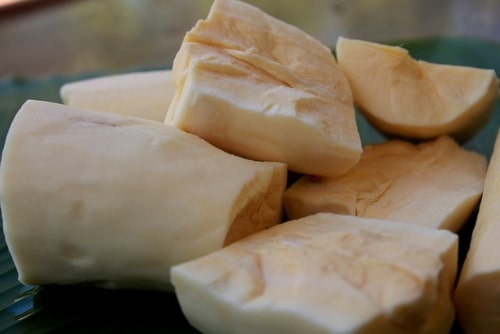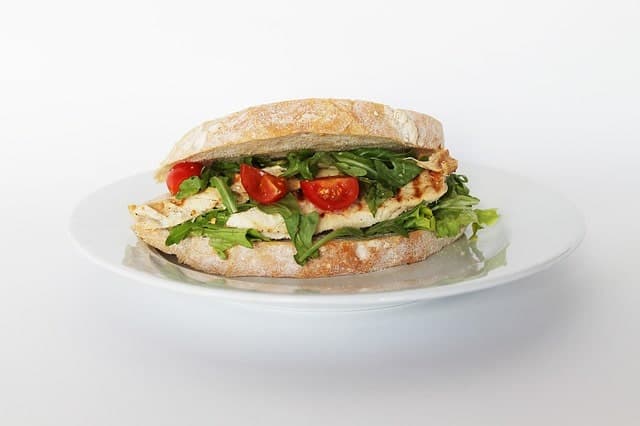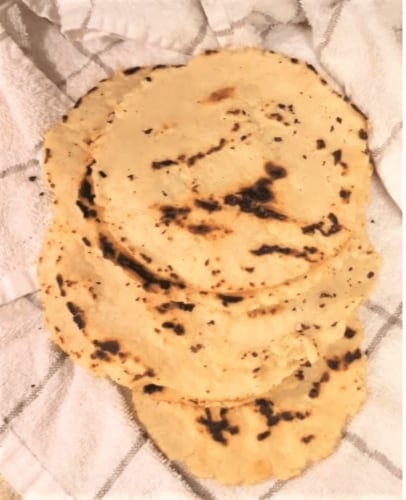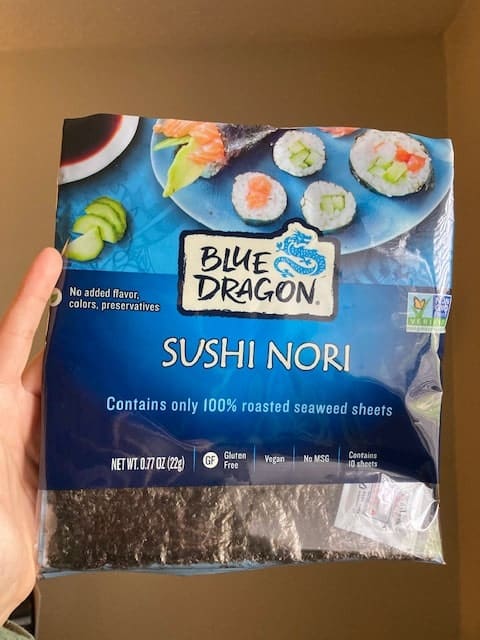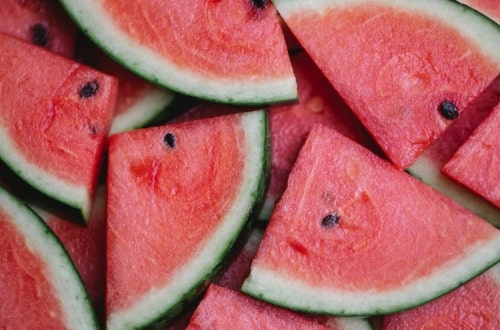These Are Some Amazing Boiled Cassava Recipes You’ll Love
Did you know that there are several boiled cassava recipes from around the world? When I was young, I thought only Latin American countries used cassava. Boy was I wrong!
You see, I grew up eating cassava all of my life, but I always knew it as yuca. My mom always either fried them to make yuca fries or boiled them to make pastel de yuca, which is like a cassava shepherd’s pie.
If you’re interested in learning more about international boiled yuca recipes, be ready to learn about some of these recipes in the article below.
(There may be affiliate links in this post. Read my disclosure policy to learn more.)
What Is Cassava Root?
Cassava, which some people call yuca or manioc, is a root vegetable that is native to South America, Asia, and Africa and can be used for so many different kinds of foods including meals, snacks, and even desserts.
It’s a staple food in many countries, especially those in the developing world because it is not too difficult to get and it is often fairly affordable.
Also, many Asian countries, in particular, use cassava starch to produce tapioca, which is commonly used for food as a thickening agent.
Boiled Cassava Recipes FAQs
Before diving into specific boiled yuca recipes from around the world, here are just a few answers to some frequently asked questions related to boiled cassava recipes.
How long should cassava be boiled?
After you peel and chop the cassava into large chunks, and after the water has reached its boiling point, place the cassava into the pot and boil for about 30 minutes or until you can easily stick a fork into the cassava without it falling apart or turning to mush.
However, the total boiling time will depend on several factors, such as the heat level on the stovetop and the size of the cassava chunks.
To prevent overcooking the cassava, and turning it to mush, you should begin checking to see if the cassava is done beginning at 15 minutes. Stick a fork into the cassava and check that it’s tender, but not too soft.
How do you eat boiled cassava?
There are several ways you can prepare cassava for consumption after you’ve boiled it and it’s done cooking.
Here are just some possible ways to prepare and eat boiled cassava after you’ve taken it out of the pot of boiled water:
- Put ketchup on it and pair it with a protein.
- Add mojo garlic sauce for a Cuban yuca con mojo recipe.
- Use it to make Nicaraguan vigorón with fried pork belly or fried pork rind.
- Make yuca fries by deep frying the cassava or brushing it with oil and baking it in the oven.
- Use it to make che chuoi khoai mi bot bang, which is a Vietnamese dessert.
- Mash it to make Colombian arepas de yuca.
Can you boil cassava with the skin on?
No, you need to take the skin off the cassava before boiling it. Otherwise, you run the risk of consuming cyanide poisoning.
According to the CDC (Centers for Disease Control and Prevention), there are two kinds of cassava species – sweet and wild. Sweet cassava is the kind that they sell here in the United States.
Although the risks of cyanide poisoning are not as high in sweet cassava, you still need to take proper measures to ensure that the cassava will cook well. One of these measures is to peel the skin.
What is the best way to cook cassava?
If you’re wondering how to cook cassava, boiling it is one of the best ways to cook it.
You’ll need to do the following to boil cassava:
- Pour some water into a pot and begin the boiling process.
- Cut off both ends of the cassava root.
- Then, cut off the peel by first slitting it and peeling it with a knife. You can also use a vegetable peeler if it’s easier for you.
- Cut the cassava into chunks.
- Place the cassava chunks into the water once it has reached its boiling point.
- Boil the cassava for about 30 minutes or until the cassava is fork-tender (begin checking at the 15-minute mark).
- Lastly, remove the cassava from the water.
Related Articles:
Asian Boiled Cassava Recipes
1. Ginataang Kamoteng Kahoy by Kawaling Pinoy
So, Ginataang Kamoteng Kayoh is a Filipino dessert (or snack) that’s made with cassava in coconut milk.
(Ok, so it’s not an actual boiled cassava recipe because you’re cooking the cassava over lower heat, but it comes close!)
Although this recipe developer adds cooked mini sago (similar to tapioca pearls) and jackfruit strips, I’ve seen other recipes that do not include these ingredients.
Also, you can eat this recipe hot or cold. I TOTALLY recommend you try this mouth-watering cassava in coconut milk recipe!
**Check out the YouTube video on their page for a visual**
2. Nilupak Na Kamoteng Kahoy By Foxy Folksy
Ok, so this is another Filipino cassava dessert recipe.
However, this recipe is different from the one above in that you are making mashed yuca (or pounded yuca/cassava… the word nilupak in Tagalog means pounded).
The main ingredients for this easy-to-make boiled cassava dessert include:
- Fresh cassava
- Butter
- Sugar or sweetened condensed milk
That’s basically it! You can also add grated coconut or cheese if you want.
It’s so easy to make! Check it out by clicking on the link above!
3. Chilli Garlic Mogo By Mayuris Jikoni
So, this is an Indo-Chinese dish.
It’s a sweet and spicy vegetarian dish with lots of seasonings and flavors. (Ketchup and soy sauce, anyone?).
After boiling the cassava, you then deep fry it and mix it in with seasonings and other flavorings.
If you’d like a visual example of a different chilli mogo recipe, please check out the YouTube video below by Bina Raniga:
4. Nadan Kappa Puzhukku by Garam Masala
This is a dish from India that consists of mashed cassava with grated coconut and spices.
To make nadan kappa puzhukku, you first boil the fresh cassava and drain it, then you grind the grated coconut together and mix with other spices. Next, you add the coconut spice mixture to the boiled cassava and mix and cook those together.
Here, check out this boiled cassava recipe by YouTuber Garam Masala to see what I mean (subtitles are in English):
5. Plantains, Cassava, and Tapioca Pearls Dessert (Che Chuoi Khoai Mi Bot Bang) By Run Away Rice
This is a Vietnamese dessert dish. It’s super sweet, but the sweetness can be tamed with some ingredient swapping, such as coconut water instead of coconut milk (as the recipe developer suggests).
**After you’ve clicked on the link for the recipe, be sure to read the description for other ingredient substitutions**
These are some of the main ingredients for this recipe:
- Cassava
- Plantains
- Pandan leaves (or pandan extract)
- Coconut water
- Coconut milk
- Sugar
- Tapioca pearls
Also, make sure to check out the video on the recipe page so you can get a visual showing you how to make this delicious dish 😉
Latin American Boiled Cassava Recipes
6. Buñuelos de Yuca By Mexico in My Kitchen
These are basically Latin American cassava fritters that you can cover in a spiced syrup.
(Several Latin American countries have their own versions of these. The recipe above is a Mexican version).
It’s super easy to make, and sooooOooo delicious! You basically cook and mash the yuca, roll the yuca dough into little balls, then deep fry them.
I TOTALLY recommend you check out the recipe above!
However, if you’d like a visual example of a buñuelos de yuca recipe, check out the video below by Anonima Venezolana for the Venezuelan version with cheese and a sweet syrup.
FYI, it’s in Spanish. I had a hard time finding an English version or one with English subtitles:
PS: I’ve seen other recipes where instead of boiling the yuca, you would grate it and then form it into tiny balls and then deep fry them.
If you’d like to try the grated yuca version, you can buy the yuca in grated form from Goya Foods. Click here to try the grated yuca buñuelos de yuca recipe by Goya.
7. Cuban Yuca con Mojo By Kitchen de Lujo
This is a Cuban yuca recipe that basically consists of boiled yuca (cassava) with garlic sauce. Many people make this dish to eat as an appetizer or snack.
Keep in mind that this recipe does ask for bitter orange juice, which can be hard to find. However, you can use Goya’s Bitter Orange Marinade or lime juice instead.
You should totally try yuca con mojo! I think you’ll really enjoy this Cuban yuca recipe 🙂
8. Escondidinho de Frango (or Brazilian Chicken Shepherd’s Pie) By Easy and Delish
Now, this boiled cassava recipe is from Brazil. It’s a chicken shepherd’s pie!
The main ingredients are boiled yuca (cassava) that you mash, chicken, and cheese. Yum!
According to the recipe developer, you can eat escondidinho de frango by itself or with a side of salad.
Check it out!!
9. Pastel de Yuca on Carne (Cassava and Beef Casserole) By My Colombian Recipes
So, you’re going to see that this recipe, from Colombia, is SUPER similar to the Brazilian shepherd’s pie recipe above. But, of course, it’s different because the flavor more closely resembles what’s common in Colombian cuisine (and you’re using beef instead of chicken).
Some of the main ingredients you’ll be using include:
- Fresh yuca (or frozen yuca)
- Ground beef
- Milk
- Onions
- Garlic
- Red bell pepper
- Tomato paste & tomato sauce
- Parsley
- Cilantro
You HAVE to take a look at the pictures on the recipe page for this dish.
Soooo mouthwatering!!
10. Traditional Vigorón Recipe – Nicaragua (Cabbage & Yuca) By Taste Atlas
Vigorón is a Nicaraguan dish I used to see being sold on the streets all the time when I lived in Costa Rica.
It’s a popular dish from Nicaragua that you make with fresh yuca (cassava), chicharrón (fried pork belly or fried pork rinds), and cabbage relish.
All of these ingredients are normally enclosed in a large banana leaf so you can easily eat it with your hands.
Nicaraguan vigorón is soo, soo, soo delicious!!!
And it’s SO EASY to make, TOO!
You MUST check out the recipe above by Taste Atlas to see what I mean!
OR, you can just check out the YouTube video below by we are mitú 😉
11. Arepas de Yuca by Receta Tipica
OK, so many of us have seen the Disney movie Encanto and have seen the characters eating Colombian arepas (pre-cooked cornmeal cakes).
Arepas are sOoooOoo delicious. I really like the yellow corn Colombian cheese arepas, which I elaborate on more on my Colombian cheese arepas page.
Anyway, so these arepas in the main recipe link above are made with cassava. Yum!
You can eat and prepare them any way you want, just like the regular Colombian arepas you may be more familiar with.
What you do is, you have to boil yuca and then let it cool down to room temperature before you start grating it.
Then, you mix in pre-cooked cornmeal (masarepa – this Amazon link gives you both the yellow and white versions), milk, melted butter, and salt.
To find out what to do next, please check out the recipe by Receta Tipica!
African Boiled Cassava Recipes
12. Cassava Stew (Yabeh) By Feel Good Foodie
This vegetarian West African cassava recipe is called yabeh. It’s basically spicy cassava and sweet potato stew that you cook in a tomato and peanut butter broth.
Sounds delicious, right??
The good thing about this recipe is that it’s so easy to make and it only takes a total of about 45 minutes to make!
And, it’s so filling for your tummy, too.
You DEFINITELY need to check it out for yourself!
13. Cassava and Beans By Eating The African Way
Ok, so this African dish is called Katogo. It’s a traditional Ugandan dish that people normally eat for breakfast.
(It’s important to note that many people make this dish with matooke (green plantains) in place of cassava).
Please check out the step-by-step African cassava with beans recipe below by Eating The African Way to find out how to make it:
Looks sooo delicious, right?
Final Thoughts On Recipes That Use Boiled Plantains
So, those are the boiled cassava recipes I have for you! As you can see from the list above, cassava is SO versatile, and boiling them is just one very convenient and safe way to cook them. It’s one of the easiest ways and perhaps one of the healthiest ways, too.
Do any of the recipes above stand out to you? If so, please let me know in the comments below!
